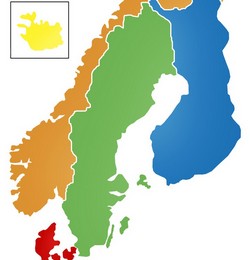Nordic-style collaboration
The five Nordic countries have a long history of effective cooperation and integration, particularly in research. Yet, the style of the cooperation is bottom-up, whereby many initiatives originate from the research community, in contrast to the EU's top-down and policy-driven approach. The EU-funded NORDERA (Lessons learnt from Nordic research coordination in context of the ERA) project compared the two styles. The team identified the best practices of the Nordic style, and examined its potential application in an ERA research context. Work also addressed how to transfer such practices to the ERA. NORDERA was intended as an ERA-NET support action. Researchers identified a need to intensify cross-border collaboration, and for pooling resources in joint research. According to the project’s findings, such an approach is the only way to meet the demands of globalisation, and to solve contemporary societal problems. As a result, the Nordic Research and Innovation Area (NORIA) was established, having similar goals to the ERA. One identified strength of the Nordic system is that research and innovation take place within a strong institutional framework. The framework embodies a long tradition of shared culture and mutual trust. Despite relatively limited budgets, Nordic researchers have a high publication rate and score well on international citation indices. Such researchers are also actively involved in EU networks and generally outperform European averages. The team also determined that the Nordic area provides an excellent opportunity for experimenting with funding models. The project offered examples, particularly the Top-level Research Initiative (TRI) of 2008. The TRI funnels funds into a common pot, and thus resembles EU-style joint programming. NORDERA concluded that the TRI model allows Nordic funding agencies to enter into joint funding and common-pot agreements more simply than EU funding agencies. The simplicity is a major reason for the programme’s success. Other similar programmes, such as the Nordic Centres of Excellence, also provide examples of successful common-pot models. NORDERA's findings were published in three major reports. The project’s documentation of the strengths of Nordic funding and joint-research models offers suggestions for the EU. Such change may help improve ERA integration.



